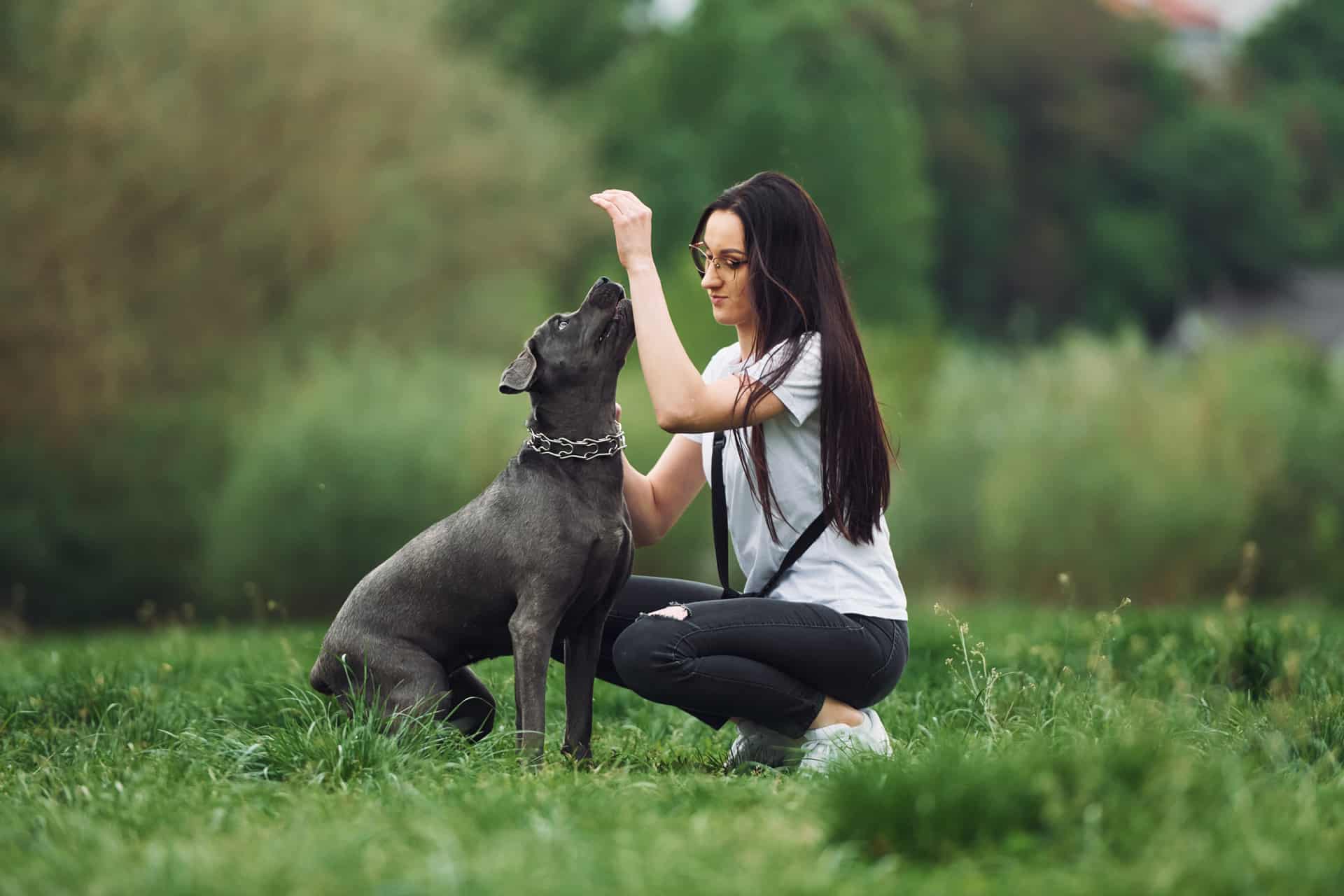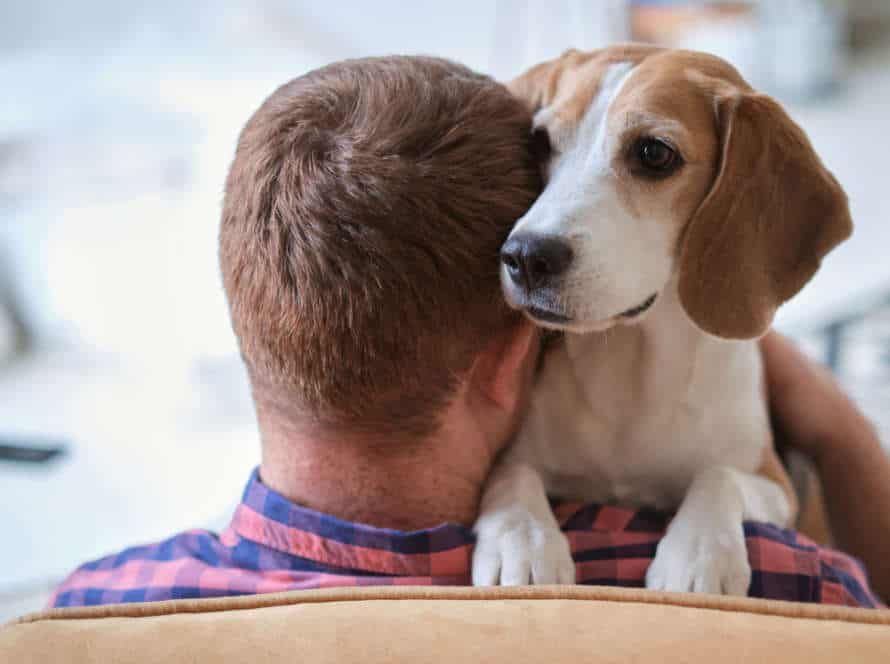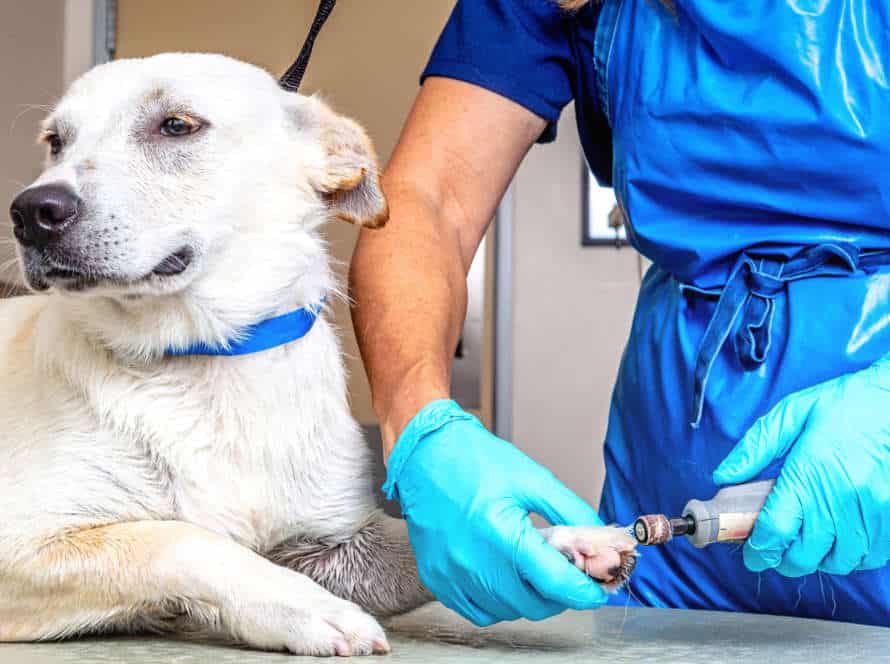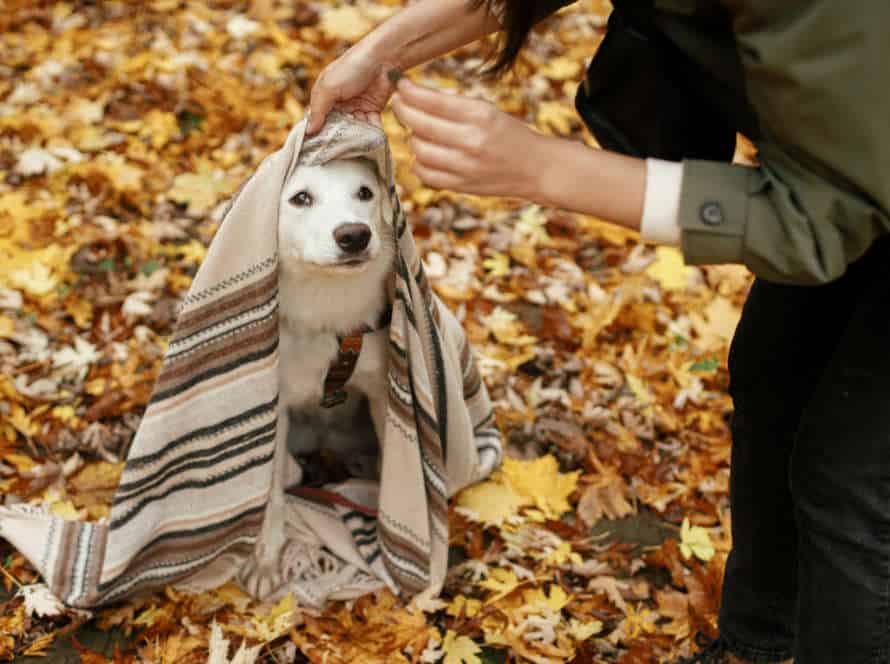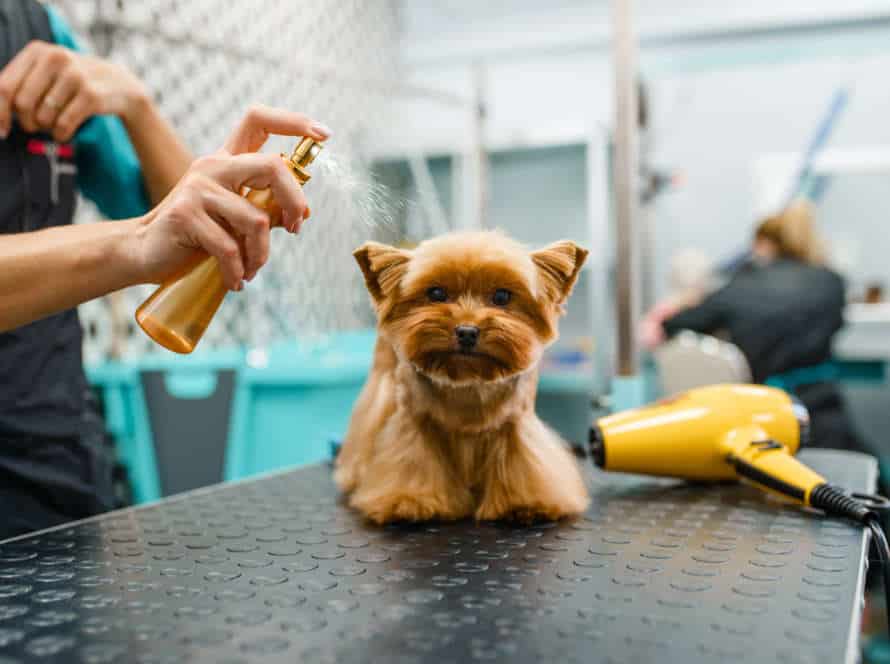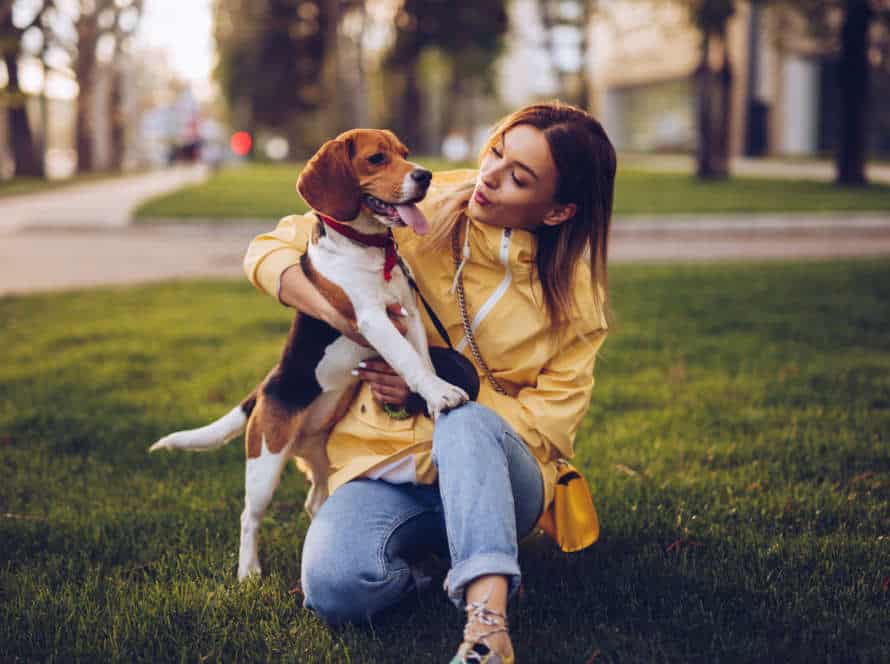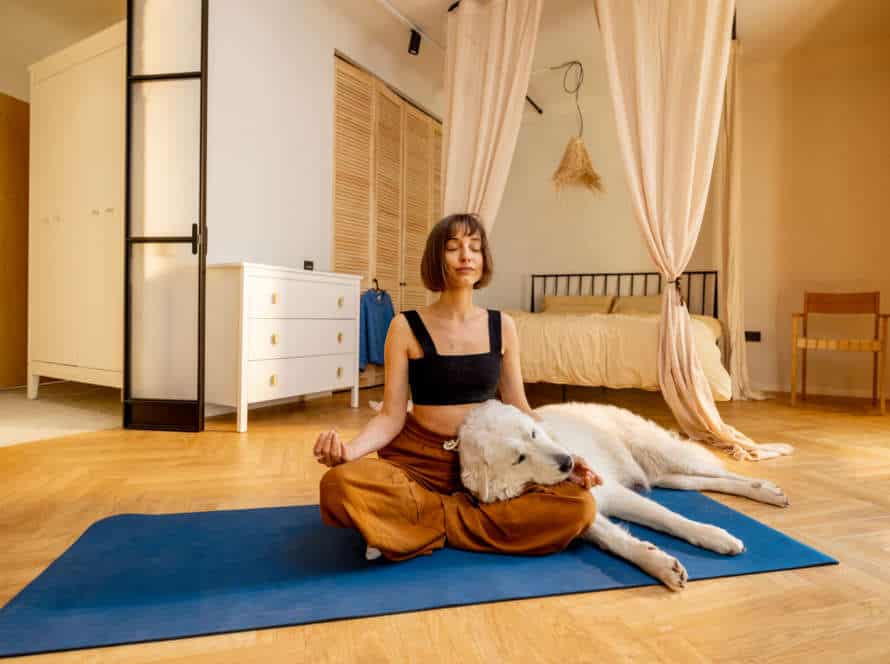Training Senior Dogs with Positive Reinforcement: A Comprehensive Guide
Training senior dogs with positive reinforcement is key. Here’s how to do it:
- Start with commands your dog knows to build confidence.
- Reward positive behavior with treats, compliments and petting.
- Train in short, regular sessions to avoid overworking.
- Use physical aids like ramps, steps and crates for easy navigation.
- Be understanding of your senior pup’s limits and help them when needed.
With patience and dedication, you can train your senior dog with positive reinforcement and give them a great life.
Understanding Senior Dogs
Working with senior doggies? Challenges aplenty! Patience and understanding are a must. Physically and behaviorally impaired pooches may need extra TLC. Build a positive relationship with your pup before any training. Find out what motivates them to get the most from positive reinforcement. Let’s explore further!
Age-Related Changes in Senior Dogs
Senior pooches go through a lot of changes – physical and mental – as they age. These can influence their behavior, training, and relationship with their humans.
Here are some common age-related transformations in senior doggos and their consequences:
- Decrease in mobility – Senior dogs may not be able to move around due to weak muscles or arthritis. This impacts their capacity to learn new instructions or take part in physical activities. Owners need to adjust their training methods and the environment to suit these pooches’ mobility issues. For example, using ramps or providing non-slippery surfaces.
- Loss of hearing and eyesight – Senior pups may lose their hearing and sight, which affects their response to commands and social hints. Owners should use visual and tactile clues, with positive reinforcement, to interact with their senior dogs well.
- Cognitive decline – Senior dogs can show signs of cognitive dysfunction, like confusion, restlessness, or disorientation. Owners can offer mental stimulation and enrichment, like puzzle toys, scent work, or obedience training, to delay the onset and severity of cognitive decline.
Pro Tip: Senior dogs need special care and consideration, both regarding physical health and emotional well-being. Owners should consult their vet and professional dog trainers to create a comprehensive care plan that’s suitable for their senior dogs’ needs.
Common Behavioral Issues in Senior Dogs
As canines age, certain behavioral problems may arise. Knowing and training old pooches with positive reinforcement is a surefire way to keep them content and healthy.
Anxiety, aggression, too much barking, and reduced mental function are some of the most common issues in elderly dogs. These may be due to physical changes, like vision or hearing loss, or changes in their environment or routine.
Positive reinforcement training uses treats or compliments to reward good behavior and discourage bad. This method is gentle and effective, and will help your pup’s quality of life in their later years.
It’s essential to be patient with senior dogs and train them in a tranquil and encouraging way. Understanding their issues and utilizing positive reinforcement techniques helps guarantee that your pup will have a pleasant and fit life in their golden years.
How to Deal with Age-Related Behavior Changes
As dogs age, their behavior can change. It’s important to understand these changes and look after your senior dog. Here are some tips to help:
- Be patient and understanding. Senior dogs may be harder to hear, see and understand.
- Stimulate them physically and mentally. Old dogs like to sleep a lot. Try giving them short walks, puzzle toys or interactive games.
- Use positive reinforcement. This will encourage good behavior and make your dog feel great.
- Visit the vet regularly. Check-ups will make sure health issues are spotted early.
- Check their diet. Older dogs have different needs; make sure their diet is tailored to them.
With care and attention, you can make your senior dog’s years happy and joyful.
What is Positive Reinforcement Training?
Positive Reinforcement Training is an approach that uses rewards and praise to motivate and strengthen good behaviors. It can be used to train pups of all ages, but especially senior dogs. This guide shares the fundamentals of this type of training and how to use it with older dogs.
Advantages of Positive Reinforcement Training
Positive reinforcement training is a way of teaching pets good behaviour, with rewards instead of punishments. It’s become a popular choice for dog owners, because it has several advantages. Here are some of them:
- Builds a stronger bond. Mutual trust between owner and pet is encouraged. Good behaviour leads to rewards, making a positive learning environment.
- Easier to learn. Pets understand this method easily – it focuses on what behaviour is wanted and rewards motivate them.
- Creates a happy pet. Positive environment gives confidence and contentment.
- Involves no harm. No physical harm or distress. Builds a lifetime of love and trust.
Pro Tip: Start small. Reward your pet every time they show positive behaviour. This helps with consistency and lasting changes.
How Positive Reinforcement Works
Positive reinforcement is a type of training that involves rewards when your pet does something good. It’s based on operant conditioning and is widely used with senior dogs.
When you reward your pet with something they love, like treats or praise, they will be more likely to do the action again. Here are some tips to use positive reinforcement with senior dogs:
- Start with simple commands like “sit” or “stay“.
- Use special treats like meat or cheese.
- Be consistent with verbal cues and rewards.
With patience and consistency, you can use positive reinforcement to train your senior pet.
Common Positive Reinforcement Techniques
Positive reinforcement is a training technique that rewards good behavior. This creates a good connection and encourages repeating it. Here are common ways to use positive reinforcement when training dogs:
- Treats – Using small treats is a great way to reward good behavior.
- Toys – Toys are great rewards, especially for energetic dogs.
- Praise – Verbal cues like “good dog” are great for older dogs.
- Clicker Training – Use a clicker to mark the right behavior, followed by a reward.
- Training Games – Games like “find it” & “hide and seek” help reinforce good behavior and give mental stimulation.
Remember – Positive reinforcement training needs patience and consistency. Always reward good behavior. Avoid punishing or scolding your dog for bad behavior. Redirect their attention and focus on reinforcing desired actions.
Getting Started with Positive Reinforcement Training
Positive reinforcement training is great for teaching senior doggos! It helps build a strong bond and life skills. Get going with this guide – so you and your pup can have the most amazing learning experience!
Preparing for Training
Training your senior pup takes some prep.
Here’s how to do it right:
- Get mentally ready to give time & patience. Also, understand the principles of positive reinforcement.
- Pick a peaceful, distraction-free spot and make sure they are clean, fed, and exercised.
- Hand out yummy treats and lots of verbal praise.
- Break it down into mini tasks, focusing on one skill at a time.
- Do all this and you’ll be on your way to a better bond and improved behavior!
Choosing the Right Rewards
Choosing rewards for positive reinforcement training of senior dogs is important. Rewards motivate dogs to learn new behaviors and tricks. Not all rewards are the same.
To select the right ones, consider these things:
- Find out what motivates your senior dog. Treats, toys, or verbal praise? Know what they like most.
- Change rewards regularly – to prevent boredom and keep motivation high.
- Time the rewards correctly – so your dog knows which behaviors are being rewarded.
- Don’t overdo it – else your dog may become too dependent on rewards and not perform on their own.
Follow these tips to motivate and train your senior dog effectively with the right rewards.
Setting Up the Training Environment
For successful positive reinforcement training of senior dogs, a suitable training environment is key. Take these steps to set up the perfect one:
- Pick an area with little distraction – an inside spot that’s quiet, or an enclosed yard.
- Training sessions should be short – only 10-15 minutes max.
- Have treats, toys, and rewards nearby and ready to use if your pup behaves well.
- Use a clicker or verbal cue to mark good behavior. Reward it with a treat or reward.
- Start with simple commands and get more complex as your pup gets used to training.
- Be patient and consistent – no shouting or physical force. Positive reinforcement works best with praise and encouragement.
Remember, older dogs learn in their own time. Stay calm, consistent, and appreciate their progress.
Basic Training Techniques
Positive reinforcement is the most humane way to train your senior pup. Give treats or verbal praise when they do something well. Avoid negative reinforcements that may frighten them. In this article, let’s explore how to use positive reinforcement for your pup’s training.
Sit and Stay
‘Sit’ and ‘Stay’ are two basic training techniques for senior dogs that can be taught using positive reinforcement methods. Here’s a guide to help you train your pup with positive techniques.
Positive Reinforcement: Reward your dog when they sit or stay on command. This encourages the behavior and they will do it more often.
Sit:
- Start with your senior dog standing in front of you.
- Hold a treat over their nose and move it to their back.
- Say “Sit” and give a treat or praise.
Stay:
- Put your dog in a ‘Sit’ position and hold a stop signal with your hand.
- Step back and say “Stay”.
- After they stay, step back to them and reward.
- Gradually increase the distance between you and your pup.
- Be patient and consistent. Always reward them for the correct behavior.
Come When Called
Training seniors pooches with positive reinforcement is a great way to teach them skills and behaviours. Here’s some tips to follow:
- Use a cheerful tone with yummy treats as rewards.
- Start with close calls, then increase the distance as your pup gets better.
- Posture and eye contact signal the command.
- Avoid using the command for something your senior dog doesn’t like, like vet visits.
- Praise and treats for following directions.
- Keep training sessions short and regular, to not overwhelm your pet.
- Always finish training on a positive note.
With time, patience, and dedication, your pooch will learn “come when called” and other essential things. This improves their life and strengthens the bond between you both.
Walking on a Leash
Leash walking is a must-have skill for doggies! Especially in cities. Here are some tips to teach your old pup with positive reinforcement:
- Start in a safe, enclosed area with minimal distractions.
- Use a comfy collar/harness and 4-6ft leash.
- Carry treats and give them whenever your dog walks beside you calmly.
- Say a cue word like “Heel” or “Let’s Go” when it’s time to walk.
- Walk at a steady speed and switch directions if they pull or lunge.
- Practice daily, increasing the duration gradually.
- Always use positive reinforcement when training and be patient with your senior pup!
Advanced Training Techniques
Training senior canines can be tough, but incredibly satisfying! Positive reinforcement is the top technique to use when teaching aging pooches. It rewards them for desirable conduct while still teaching them commands and limitations. This manual will go over some more advanced training methods that use positive reinforcement to help your elderly pup learn and develop.
Tricks and Commands
Training senior dogs? It’s a must to use positive reinforcement and advanced techniques! Tricks and commands? Two important elements for advanced dog training. “Roll over,” “shake hands,” and “play dead” can make your senior pup’s routine more exciting.
Advanced commands to teach: “Speak,” “heel,” “fetch,” “down,” “play,” and “stay”. Positive reinforcement and rewards like treats, praise, and playtime help reinforce good behavior.
Pro Tip: Stay patient and consistent with training. And don’t forget to give your senior pup love, attention, and exercise! Keeping them happy and healthy!
Dealing with Problematic Behaviors
For troublesome behaviors in older pooches, advanced training techniques with positive reinforcement can help. Here’s what to do:
- Figure out the source of misbehavior, like distress or monotony. Then, use the right training to tackle it.
- Reward desirable behavior with high-value treats and kind words. Also, try to divert bad behavior.
- Have a strict routine and environment to make your dog feel at ease.
- Join a group training class or hire a trainer for advanced training techniques.
- Patience and consistency are a must. Train in a peaceful and cheerful atmosphere for the best results.
Pro Tip: Positive reinforcement not only diminishes misbehavior but also strengthens the relationship between you and your senior dog, leading to a happier bond.
Socialization Training
Socialization training is a key part of advanced techniques. It involves your senior dog meeting different people, animals, and places. The aim is to help your dog feel more self-assured, cool, and obedient in social settings.
Tips for successful socializing using positive reinforcement:
- Begin early and gradually get your pooch used to new experiences.
- Provide treats and applaud your dog for good conduct.
- Be understanding and don’t make your pet interact with other animals or people.
- Practice often, each day, if possible, and change the areas and activities.
- Follow your senior dog’s behavior and finish the training if it seems scared or anxious.
With frequent and positive training, your senior dog can become a content, confident, and social pet.
Factors to Consider
Training older dogs can be tricky! This guide to using positive reinforcement for senior canines will cover some of the key factors you need to think about. These include age, physical fitness, mental health, and prior experience. With the correct strategy, you can succeed in using positive reinforcement to train your aged pooch.
Health Issues
Positive reinforcement is great for training senior dogs. But, trainers must consider their pup’s health concerns.
- Sight/hearing issues may need visual/scent cues.
- Joints? Low-impact exercises work best.
- Medical conditions? Shorter sessions + more breaks + patience.
- Treats? Low-calorie ones like carrots/green beans.
- Potty breaks? More often.
By adapting the training to the pup’s health, senior dogs can learn new behaviors and have a better life.
Breed-Specific Characteristics
It’s key to remember breed-specific characteristics while teaching senior dogs with positive reinforcement. Different breeds have unique traits and habits, so comprehending them is useful in modifying your training methods and making them more successful.
Take Terriers for example; they are bred to hunt and dig, so they often bark and act aggressively. Thus, it’s necessary to train them to control their barking and aggression, whilst encouraging their hunting and digging abilities.
Likewise, herding breeds need lots of physical and mental stimulation, since they are bred to herd livestock for long hours. Positive training can be used to productively use their energy and intelligence.
Understanding breed-specific characteristics and adjusting the training accordingly can make the training process more pleasurable and useful for both the trainer and the dog.
Importance of Consistency
Consistency is essential when you train a senior pooch with positive reinforcement. Dogs learn best when they understand what’s expected of them, and rely on their owners to remain steady in their methods.
Here are some things to consider:
- Timing: When it comes to positive reinforcement, timing is vital. Make sure to reward your pup instantly after they carry out the wanted behavior, to confirm the connection between the action and the reward.
- Expectations: Be precise about your expectations, and speak to your dog clearly. Use steady commands and clues to help them figure out what you want.
- Environment: The training atmosphere should be consistent too. Try to reduce distractions and form a predictable routine that your pup can count on.
- Positive Reinforcement: Positive reinforcement requires uniform rewards for good behavior. Regularly use the same rewards, and avoid punishing your dog for bad behavior.
By keeping your methods consistent, you can teach your senior dog new behaviors, and maintain a strong bond with them. Pro tip: Be patient and persistent in your training attempts. It takes time and consistency for good results!
Conclusion and Final Tips
Training senior dogs with positive reinforcement? Patience and consistency are the keys! As the dog learns and masters new behaviors, don’t forget to reinforce them with positive reinforcement. Offering treats, verbal praise, or even physical touch can be great options. To get the most out of your training experience, try these tips:
Benefits of Positive Reinforcement Training
Positive reinforcement training is a great way to train older pups. Here’s why:
- It strengthens the bond between pup and owner.
- It helps them learn quickly and easily.
- It encourages good habits and stops bad ones, without force.
- It boosts their self-confidence.
Final tips for this method:
- Start as soon as possible so they get used to it.
- Be patient and consistent.
- Reward with treats or toys.
- Keep sessions short and frequent.
- Always end with something positive.
Recap of Key Points
Training senior dogs? Positive reinforcement is the way to go! Remember these tips:
- Keep it brief and regular.
- Use rewards like treats or praises.
- Be patient and clear with commands. Let them learn at their own pace.
- Say no to punishments or negative reinforcement. This can be harmful.
- Praise your pup for their progress and effort.
Pro Tip: Senior dogs may have physical limitations. Work closely with a vet to make a plan that suits your pup’s needs and abilities.
Final Tips for Successful Positive Reinforcement Training
Positive reinforcement training is great for older pups. Here’s how to make it successful:
- Be steady – use positive reinforcement every time your pup does what you want.
- Treats, toys, or attention – give your pooch the rewards they love.
- Keep it short – limit sessions to 5-10 minutes.
- Be patient – progress may be slow.
- Need help? Ask an expert.
- End on a high – celebrate with praise and rewards.
These tips will help you give your senior dog the best positive reinforcement training.
Frequently Asked Questions
Frequently Asked Questions about Training Senior Dogs with Positive Reinforcement
Q: Can senior dogs be trained?
A: Yes, older dogs can learn new tricks and behaviors through positive reinforcement techniques. However, it may take longer and require more patience than training a younger dog.
Q: What is positive reinforcement?
A: Positive reinforcement is a training method that involves rewarding your dog for desired behavior rather than punishing them for incorrect behavior. Rewards can be treats, praise, or affection and can help reinforce good habits.
Q: How often should I train my senior dog?
A: It’s important to not overdo it, especially with an older dog. Short, consistent training sessions of 10-15 minutes per day are recommended. This allows your dog to stay engaged and will prevent them from becoming bored or frustrated.
Q: What are some challenges I may face when training a senior dog?
A: Senior dogs may have physical limitations and may not be able to perform certain tasks. They may also have behavioral issues or bad habits that have become ingrained over time. It’s important to work with your dog’s strengths and limitations and to be patient and consistent in training.
Q: Can positive reinforcement training work for all types of dogs?
A: Positive reinforcement can be effective for all dogs, regardless of age, breed, or temperament. However, certain breeds may require different training methods or techniques, and it’s important to work with a professional trainer or behaviorist if you are unsure how to train your dog.
Q: Is it ever too late to start training a senior dog?
A: It’s never too late to start training a dog. Even if your senior dog has developed bad habits or is resistant to training, positive reinforcement techniques can still be effective in teaching new behaviors or correcting unwanted ones.

